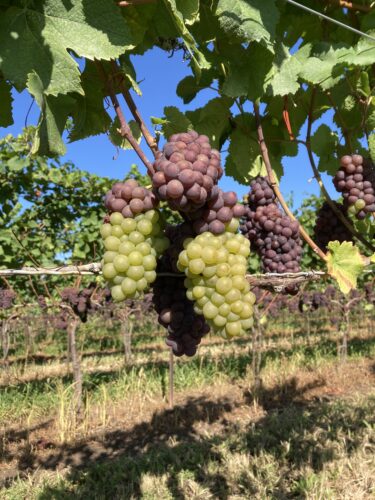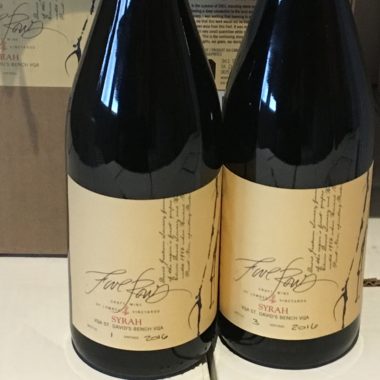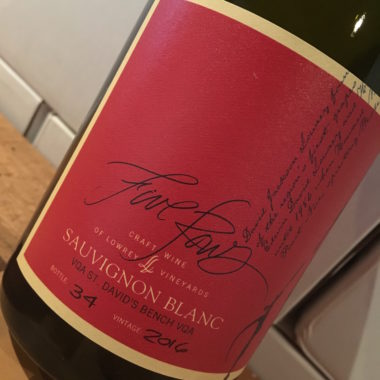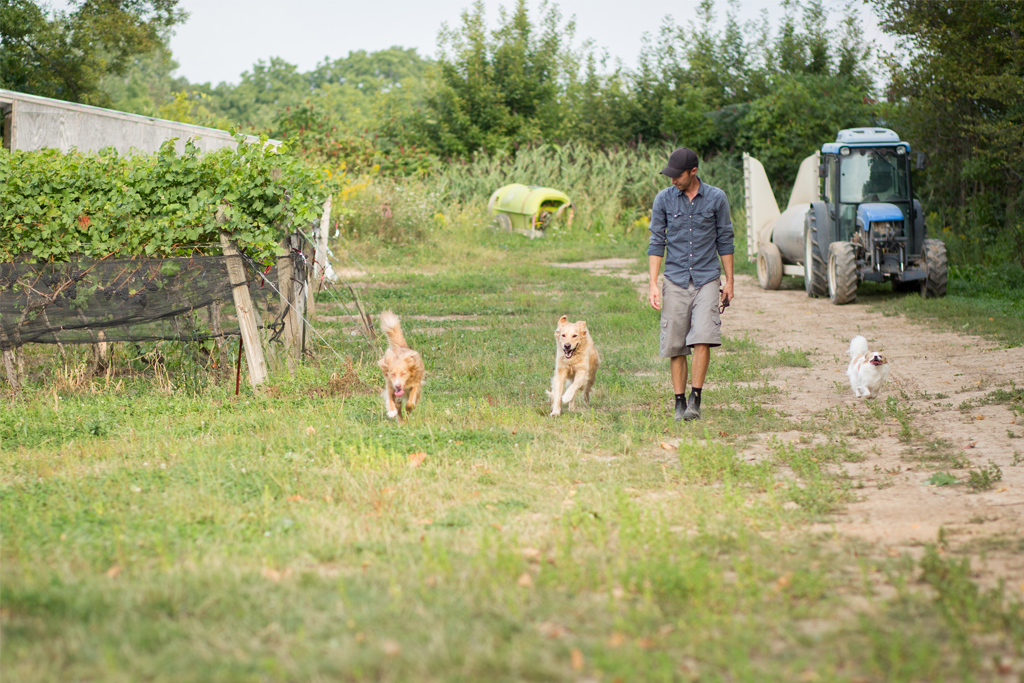
2024 Pinot Gris
For as long as I can remember, I’ve had a passion for organizing. My youth bedroom was a shrine of toys and sports memorabilia that I cherished and methodically categorized. Toys were for displaying and keeping in meticulous condition, while actually playing with them was an afterthought. Everything had its place and I was happy. Marie Kondo would have been proud of me.
In grade school, I thoroughly enjoyed creative writing. However, when faced with the task of writing a story, I much preferred the process of editing to the actual creative endeavour of coming up with original content. Being able to massage a sentence into something borderline coherent still gives me great joy. I am no wordsmith, perhaps more of a “wordslayer”.
One area where this penchant for organizing and editing has served me well is the many hours I’ve spent tending to Pinot Gris grapevines over the last 20 years. When embarking on an adventurous journey down a row of Pinot Gris, the mindset one must adopt is “survive and advance”. There is a gradual process to canopy management and thinning that can wear on those in need of instant gratification, so it pays to enjoy each vine along the way.
The ultimate goal is a well-spaced, vertically growing canopy with two uncrowded clusters per shoot. It will take multiple passes down a row to achieve this preferred arrangement, so it’s advisable to focus on a single task with each trip. In my experience Pinot Gris is the most difficult varietal to tame, as it has a tendency to flop over, grow laterally and create “clumps” wherein many clusters are growing tightly together. Tackling the shoot thinning first, then shoot positioning (tucking), followed by cluster thinning is the usual order of business. A careful removal of leaves in the fruiting zone is a late season finishing touch.
The grapes for our 2024 Pinot Gris are sourced from two different blocks on our farm. The older block, a 2004 planting of Clone 457 rootstock SO4, tends to be more vigourous and wild, but fairly predictable in regard to flavour production once properly organized. The younger block of Clone 53 rootstock 3309 was planted in 2019 and is still in the discovery phase. The vines seem more amenable to my efforts, with slightly looser clusters that are more robust to disease pressure. The initial crops have been light and VERY ripe, providing a nice complement to the older block fruit.
The crop from both blocks was harvested on September 11, 2024. Pressed juice was notably flavourful and came in at 21.2ºBrix, TA 7.13 and pH 3.38. Two-thirds of the juice was fermented in neutral French Oak barrels, with the remainder housed in tank. The cool temperature fermentations spanned September 17 to October 17, gradually accumulating the familiar Pinot Gris aromatics of canned pear, dried apricot and honey. The most noticeable contribution of the Clone 53 block is in the added aromatic intensity and more complex mouthfeel elements.
To know that vines you personally organized, provided the fruit for a wine that you created and edited into its optimal form, is the ultimate in satisfaction.



